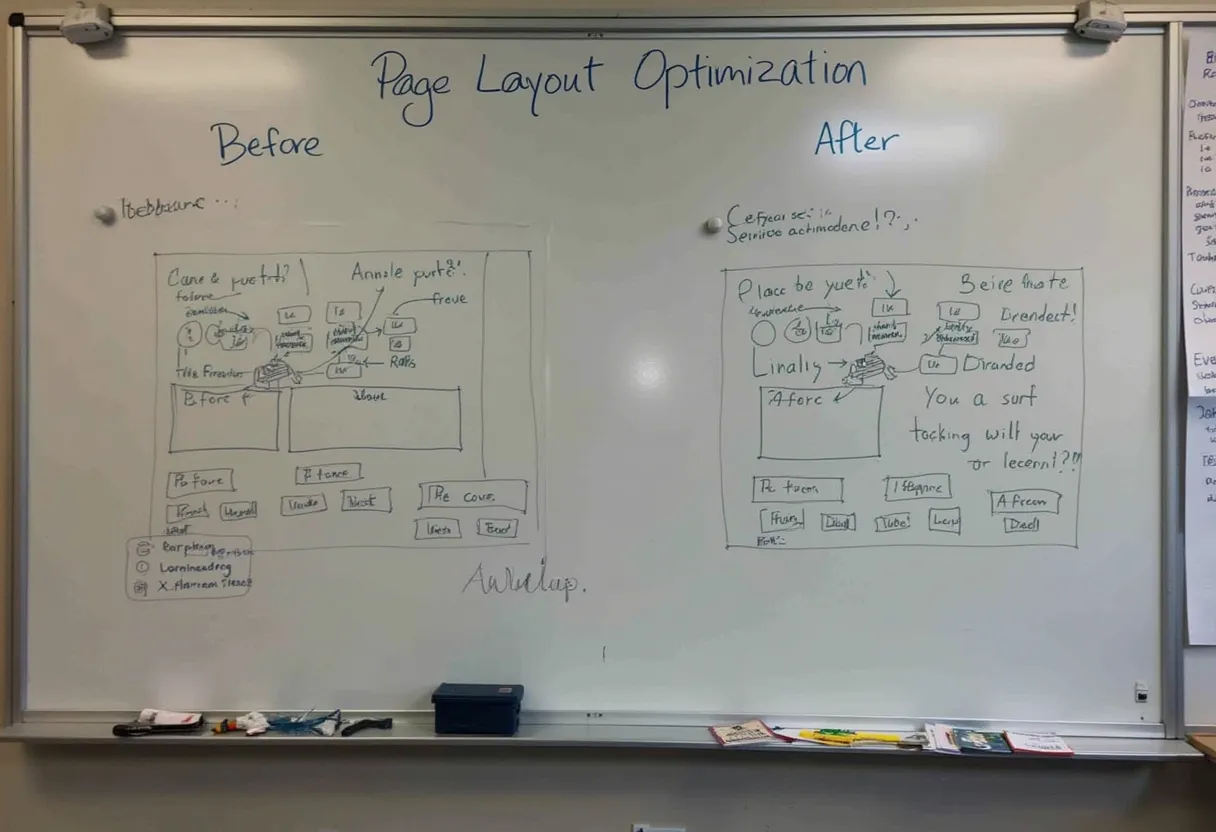Definition
Page Layout Optimization refers to the process of designing and structuring the elements of a webpage to improve its visibility, usability, and search engine rankings. This involves optimizing various components such as content, headers, images, internal links, and technical aspects to make the page more accessible and understandable for both users and search engines.
How It Works
Function and Concept
Page layout optimization is a crucial aspect of on-page SEO, focusing on how the different elements of a webpage are organized and presented. This includes:
- Content Structure: Using header tags (H1, H2, H3, etc.) to define the topic and sections of the page, making it easier for users and search engines to understand the content hierarchy.
- Technical Optimization: Ensuring the website’s source code is efficient, server speed is optimized, and page load times are minimized to improve search engine crawling and user experience.
- Internal Linking: Organizing internal links to guide users and search engine bots through the website, enhancing navigation and distributing link equity effectively.
- Mobile Optimization: Adapting the webpage layout to be accessible and user-friendly on various devices, including smartphones and tablets, which is increasingly important given the rise in mobile searches.
Practical Use Cases
- User Experience: A well-optimized page layout enhances user experience by making content easier to read and navigate, which can lead to higher engagement and lower bounce rates.
- Search Engine Crawling: Properly structured pages help search engines understand the content and relevance of the page, improving its chances of ranking higher in search engine results pages (SERPs).
Why It Matters
Importance in SEO
Page layout optimization is vital for several reasons:
- Search Engine Rankings: Optimizing the page layout helps search engines understand the content better, which can improve the page’s ranking in SERPs.
- User Experience: A well-organized page layout contributes to a positive user experience, encouraging users to stay longer on the site and explore more pages.
- Accessibility: Ensuring the page is accessible on all devices and for users with disabilities is crucial for broader reach and compliance with web standards.
Impact on Website Performance
- Load Times: Optimizing images, reducing file sizes, and improving server speed can significantly reduce page load times, which is a key factor in search engine rankings and user satisfaction.
- Conversion Rates: A user-friendly and well-structured page can lead to higher conversion rates by guiding users more effectively through the site.
Best Practices
Content Optimization
- Use Clear and Specific Header Tags: Ensure each page has a single H1 tag and use subsequent headers (H2, H3) to structure the content logically.
- Write Unique and Helpful Content: Create content that matches user intent and is valuable to the audience, using target keywords strategically.
Technical Optimization
- Optimize Server Speed: Use tools like Google Page Speed Insights to improve core web vitals such as Largest Contentful Paint (LCP), First Input Delay (FID), and Cumulative Layout Shift (CLS).
- Efficient Source Code: Remove unnecessary code sections and consolidate elements to improve website performance and ease of indexing by search engines.
Internal Linking and Structure
- Logical Structure and Crawl Depth: Ensure the website hierarchy contains no more than four levels to facilitate quick crawling by search engine bots.
- Internal Linking: Use a good sitemap and internal links to manage link equity and guide users and bots through the site effectively.
Mobile and Design Optimization
- Mobile-Friendly Design: Ensure the webpage is accessible and performs well on mobile devices, as this is a priority for search engines like Google.
- Optimize Images: Use alt tags and descriptions for images, and keep file sizes as small as possible to reduce page load times.
Additional Strategies
- Use Schema Markup: Add schema markup to help search engines understand the page topic better, which can result in rich snippets and higher CTR.
- Optimize Meta Tags: Write descriptive and relevant title tags and meta descriptions to improve click-through rates and help search engines understand the page’s topic.
By following these best practices, you can ensure your webpage is optimized for both search engines and users, leading to improved rankings, user experience, and overall website performance. Remember to consider the impacts of Page Experience Update Optimization, Page Load Time, Page Speed Optimization, and Responsive Web Design in your strategies. Utilizing tools like Heatmap Analysis for SEO and focusing on User Experience (UX) Design for SEO can further enhance your efforts. Incorporating Mobile-First Indexing and understanding User Experience Signals (UX) can provide additional insights into performance improvements, especially aligning with Core Web Vitals.
Conclusion
Page layout optimization is an essential element of SEO that directly affects user experience, search engine crawling, and overall website performance. By implementing effective strategies and best practices, you can create webpages that are not only user-friendly but also optimized for better search engine rankings. Focus on optimizing content, improving technical aspects, and ensuring mobile compatibility to stay ahead in the ever-evolving digital landscape.



